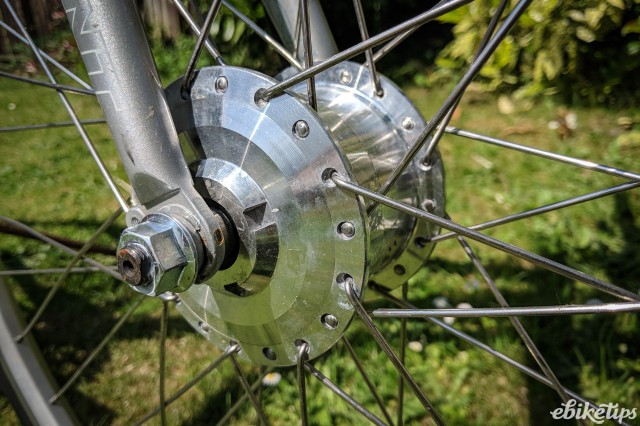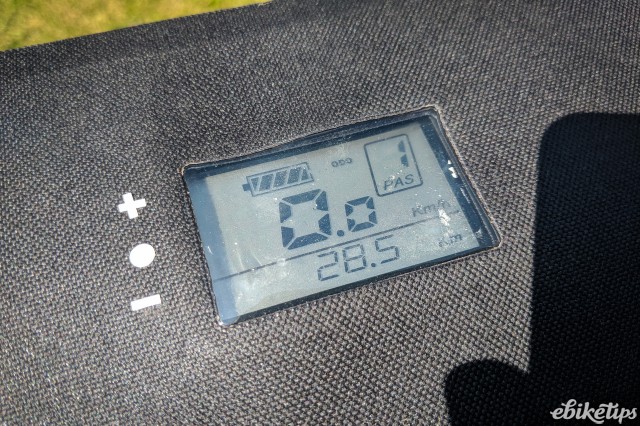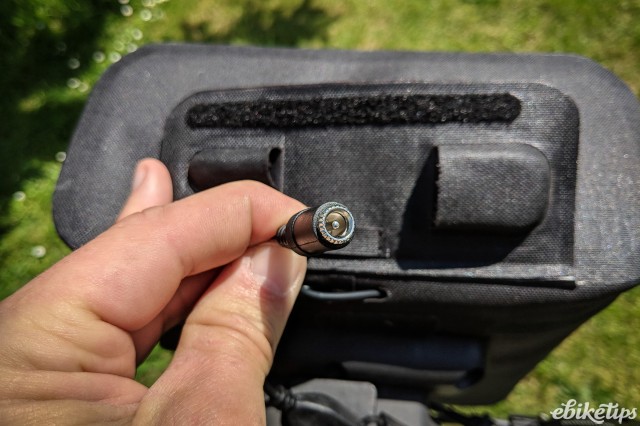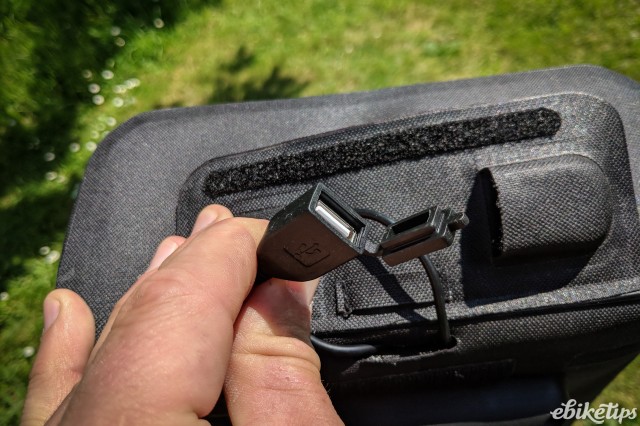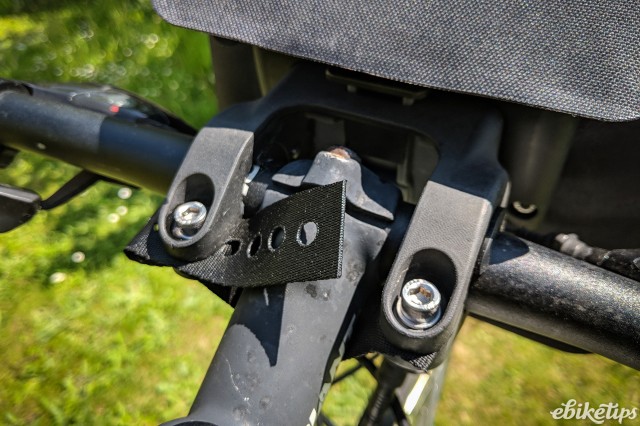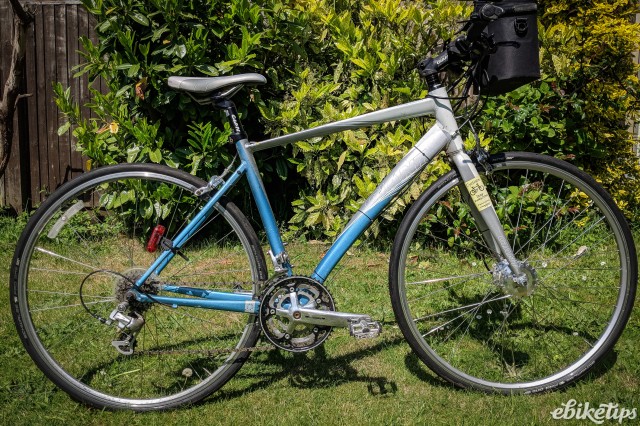Swytch e-bike system
ebiketips
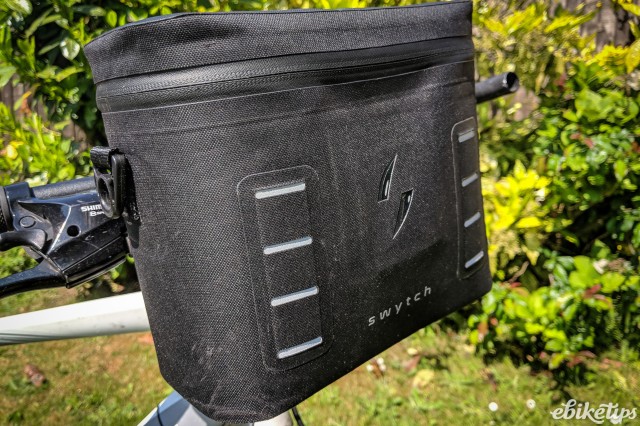
If you want a simple way to make your normal bike into an e-bike, then they don’t come much simpler than the Swytch system. It’s compact, light and easy to fit. It’s not without its issues – the effect on handling being the main one – but as a straightforward retrofit system it has a lot going for it, especially if you have a folding bike and a mixed commute. The whole system only weighs about 4kg and the battery bag is easily removable, so if you’re worried about manhandling a heavy e-bike then it’s certainly one to look at.
Swytch successfully crowdfunded this system, and from July it’ll be available to buy direct, with the 180Wh battery variant we had costing £550 and the larger 360Wh battery setting you back £750. We fitted the Swytch system to a Giant Dash Hybrid. Here’s a video of how that went:
It was pretty easy, but not without its challenges. If we’d had a round-tubed bike then the cadence sensor would have fitted fine, but the Giant’s hydroformed alloy tubes didn’t give enough room and in the end it was a bit of a hack to get it working. You’re never going to be able to come up with a solution that works perfectly for every bike, and the Swytch system should be fine for nearly everything, even if you have to do a little bit of bodging along the way. I didn’t fit the brake cutoffs; originally it was because I would have had to replace the brake cables, but in the end I never bothered. I don’t think the system needs them.
The bag: well designed and a neat solution
The bag fits via a bracket that has all the motor and controller connections built in, so you can just slot the bag on and you’re ready to go. If you don’t want to ride under power you can leave the bag at home; the motor isn’t quite as free running as some when it’s turned off but it’s not too draggy, and it’s perfectly possible to ride the bike around without the battery on.
The bag position does cause some issues: for instance, if you want to fit a front light then there’s not much space for one. I had to position the light right on the end of the bars. The Swytch bag has a light-up logo that’s ok if you just want to be seen around town, but if you’re going anywhere you want to see where you’re going it’s not going to be enough.
The motor: too many modes, but enough power to be useful
The Swytch system is the new front runner in the race to have a needlessly large number of assistance modes. It has nine, which is at least five and probably six more than it needs. Below about five the motor’s hardly doing anything anyway, so all those could be knocked out for a start. The controls on the bag are easy enough to use, and the LCD display is big enough to easily read too, although the vinyl window it sits under catches the light sometimes, and fogs up if it gets damp.
Anyway, from five to nine the motor kicks in a useful amount of assistance. It’s not the most powerful hub motor I’ve tried, and neither is it the least powerful; it sits somewhere in the middle, comparable to units like the TranzX F15 that was on board the Raleigh Spirit E. It’s enough to get me up my benchmark hill (1.5km at 5% average, with a 12% bit) without really getting into any trouble.
The gearing of the bike it’s fitted too helps here: the Giant Dash has a triple chainset, so you can drop down to the inner ring and twiddle up stuff that’s pretty steep. I’ve taken the Swytch bike up a local climb that’s easily 15%, and it’s still able to give useful assistance although you have to do a bit of the work yourself.
It’s a fairly quiet motor when it’s being powered. That being said, it does seem to make a fair amount of noise when it’s not, and it isn’t particularly free running when you don’t have the battery attached. It’s not awful, but there’s enough resistance that you notice it when setting off.
Our test kit had the smaller 180Wh battery, and there’s a 360Wh option too. The small battery has plenty enough capacity to get down into town and then back up the big hill on full power, a 5-mile round trip; Doing it twice is just past the limit of the battery. Swytch claim a 25-mile range which you’d probably get close to on the flat if you weren’t on full assistance. Charging the battery is simple; there’s a flap at the back of the bag that contains the charging port, and a full charge takes about 3 hours. There’s also a USB port under the flap you can use for charging devices on the go.
It’s a system designed for short hops though, not long commutes, and it’d work especially well if you have a mixed commute (car and bike or train and bike, for example) and you wanted to make the car bit easier. Fitting the system to a folding bike only adds just over a kilo to the weight you have to lift into your car, because you can take the bag battery off easily and carry it separately.
Handling: you can feel the effect of the bag
The bag is quite heavy (2.5kg for the smaller battery that we had, and 3.5kg for the bigger one), and sits quite high on the bike, and this affects handling. It’s a noticeable extra weight at slow speeds, and it takes a bit of getting used to. Putting a big weight up there can also make the bike easier to unweight at the back under braking. It isn’t a deal breaker by any means, but it’s the nature of the system and there isn’t any way round it within the confines of the current design.
The system has been designed to be simple to fit and to accommodate as many bikes as possible, and the handlebars are the obvious place for the battery given that. I’d be keen to see a version of the system that used a seatpost-mounted battery though, as the weight distribution would be much better. You’d need a separate control unit, of course, and it wouldn’t be quite as easy to fit, but I think I’d prefer that layout, and having a red Swytch logo as a rear light would work a lot better too.
Overall: a good solution, especially for mixed mode riding
Overall the Swytch system is good. It’ll especially appeal to anyone who has a mixed mode commute, or struggles with heavier e-bikes, because it’s light and easy to fit to pretty much anything. The system has enough power to be useful, and even the small battery will cover most people’s commutes with ease.
Whether it’s the best system for you depends on what kind of riding you do. The Swytch system isn’t as powerful as the Panda M-Drive mid motor we tested, and has more of a negative effect on the bike’s handling. That system is a fair bit heavier though. If you’re looking to convert a standard bike to an e-bike for full-time powered use, the M-Drive is a better solution. If you only want power some of the time, or need an e-bike that’s as light as possible, or want to add power to a folding bike, the Swytch wins out. It’s an inexpensive and simple way of getting a bit of extra assistance.


